
Are you struggling to engage readers on your blog?
Well, you’re not alone.
Your audience gets bombarded with content everywhere they look. They’re no strangers to click-bait blog posts with generic and unhelpful information. As a result, most people today glance at a website for a mere 8 seconds before deciding it’s not for them.
Luckily, you can learn how to write great blog posts that keep people engaged. In spite of the fact that there’s virtually endless information available online, very few blogs actually provide great quality content. All you have to do is follow best practices and stand out from your competition.
Which isn’t as hard as you might think. Here are my best tips on how to make your blog more engaging.
Let’s start!
Step 1: Define your audience
The most compelling blogs are ones where you feel like the author is speaking to you directly.
How do the best blogs create this effect?
They do it by focusing on a specific type of audience and then writing blog posts that address them in a personal way.
For example, here’s a screenshot from The Anna Edit blog by Anna Newton. The blog clearly writes for women and features content around food, self-care, children, and everyday struggles.
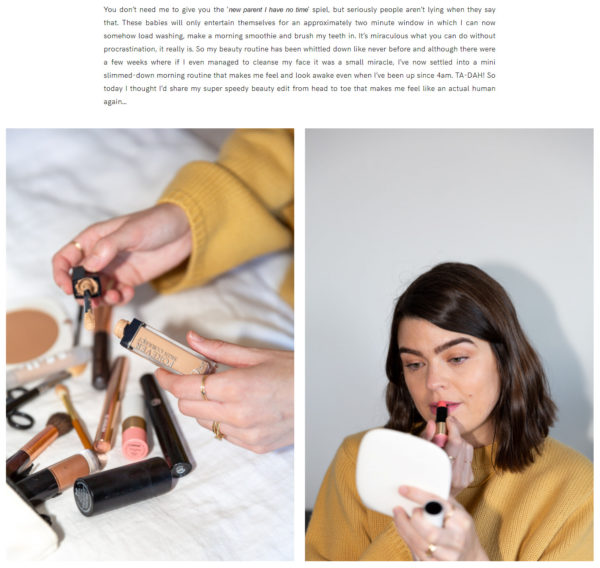
Your ability to create blog content that sounds relevant and personal to your audience will depend on how clearly you can see them as you write your posts.
I recommend creating a concrete buyer persona by studying your current audience and with the help of free tools. You can find buyer persona templates and generators online. These platforms will ask you several important questions that will help you see your audience more clearly. You’ll get a fleshed-out template of your audience that you can refer to and write posts for.
Step 2: Craft catchy headlines
Your blog title or headline is the first thing people see when they land on your blog page.
And within a split second, your headline helps readers decide whether your post is for them or not. Here are some best practices for creating headlines that hook readers.
- Keep your headlines short and sweet. Don’t give away too much. The job of your blog post headline is to get people to visit the page, not to summarize the entire blog post.
- Use a headline analyzer tool. This online tool tells you if your headline is SEO-optimized and easy to read. You’ll get a score and tips on how to improve your titles.
- Use action words at the beginning of your headline. Verbs like ‘Boost’, ‘Grow’, and ‘Transform’ feel dynamic and solution-oriented, convincing people that your blog post will help them
- Let readers know that your post offers the best solution by adding words like ‘Easy’, ‘Fast’, ‘Proven’, and more.
Optimizing your headlines for blog content is a basic first step to skyrocketing your readership. It won’t matter if you’ve spent a week crafting an amazing blog post if your headline falls flat. So, don’t hit the publish button on your blog unless you’re ready with a great title or headline.
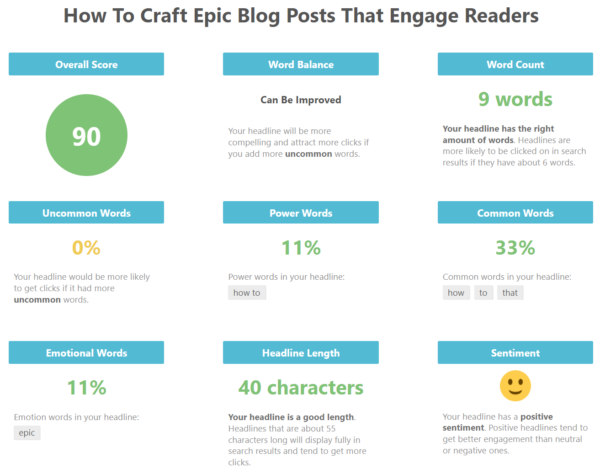
Step 3: Hook your readers with a killer first paragraph
The first few seconds a reader spends on your blog post play an important role. It’s that first paragraph of your article that will help readers decide whether or not they should keep reading or move on.
The key to getting your readers hooked is to write a great opening sentence that both arouses their curiosity and excites them to read more.
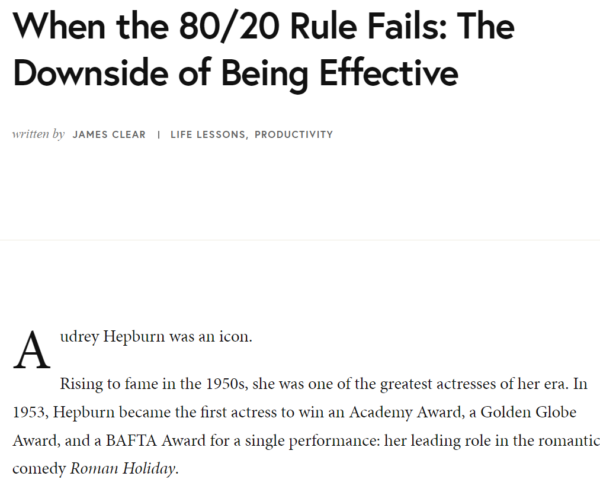
You can do this by asking a question (like the opening line of this post) or promising a solution to a problem. Or just make an interesting statement like the one in the image above.
Another way to open your blog post is to state a statistic or research finding that makes an interesting claim. This type of opening will have people wanting to know more and will compel them to keep reading.
For example, imagine a post that starts like this:
Did you know that 40% of Millennials go into debt just to keep up with their friends?
You’d want to know more about why that’s true and what it means. And that’s a real marketing statistic, by the way.
Create powerful opening sentences and paragraphs and your audience will feel like they have no choice but to keep on reading.
Step 4: Follow the three-sentence rule
The three-sentence rule is more of a writing guideline than a rule.
But it has the power to transform a tedious-looking blog post into one that’s fun and easy to read. It’s a great rule of thumb to follow to make your blog posts more readable.
Here’s what the three-sentence rule means: when writing content, keep your paragraphs to no longer than three sentences.
It makes your content far easier to read, especially on mobile devices. Breaking up your posts into smaller paragraphs also helps people scan through them fast. So, readers can go through it quickly to find the information they need.
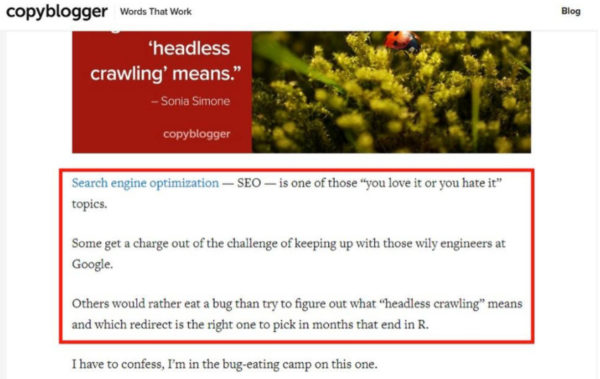
If you’ve noticed, this post follows the three-sentence structure in most cases. The point of this way of writing is to create less strain and more readability.
You can also make content more readable by using bullet points, creating subheadings, and adding images.
Step 5: Use images and graphs
When in doubt, add more images.
As it turns out, images add more than a bit of color and style to your articles. Studies show that blog posts with lots of images tend to get 94 percent more views than plain text blog posts.
The reasons are straightforward and powerful:
- Images break up long posts and make your content more readable.
- Pictures explain complex ideas more easily. They can convey processes and challenging concepts with a brief glance.
- You create context when you add images. Note how in this post, every section has an image that reinforces the main idea.
Seeing is more than believing – it’s understanding ideas and information comprehensively.
So, don’t hold back when it comes to images. There are plenty of great websites where you can find high-quality stock photos for free. Look up Unsplash, Pixabay, and similar sites. You’ll find pictures for every topic you can think of. And they’ll add life to your content.
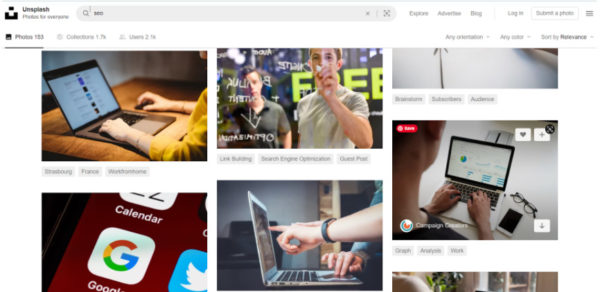
Also, create unique infographics, add slide presentations, and interactive elements to your website by working with design tools. Canva is one such platform that you can use for free.
Step 6: Keep things short and precise
In the effort to sound smart, many blogs make the mistake of writing long winding sentences. They also use unfamiliar words and technical explanations for audiences that aren’t experts in the topic.
The outcome of making your blog content complex is that it puts people off. When people read your blog, it shouldn’t make them work to understand what you have to say.
So, another important rule to make your blog engaging is to keep your writing concise. Also, avoid filler words and paragraphs that can be easily deleted without impacting your message.
You should typically use a conversational writing style in your blog posts.
If you’ve done the first step, which is to define your audience, you’ll find that your blog posts are automatically more friendly in tone. It’s always when your audience is ambiguous that your content also becomes vague and difficult to read
Step 7: Don’t be afraid to write opinionated posts
Your readers aren’t looking for ideas and information that they can get through common sense thinking. They’re looking for interesting new insights that help them solve problems easily.
If you want to build your blog readership, you need to have a take that’s fresh and unique.
A common mistake most bloggers make is trying to write blog posts without offending anyone. If you try to please everyone, it won’t get you too far. Your content will sound generic, safe, and downright boring.
Instead, say what you really think and express your opinions freely. Take a side and make arguments for why you believe what you do.
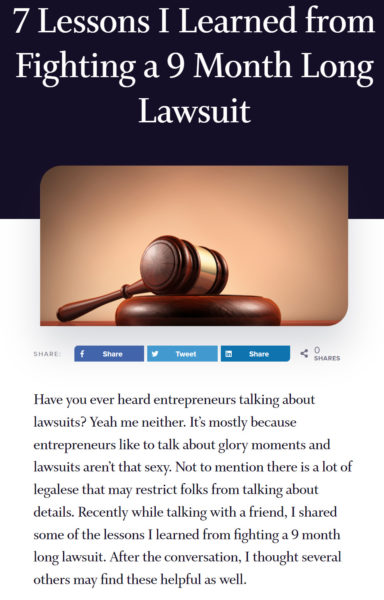
When you say something different that challenges widely accepted ways of thinking, you’ll catch people’s attention.
Such content also generates discussions and tells search engine algorithms that your work is engaging. Having a strong opinion means that you’ll win over like-minded people. They’ll return to your blog and share your content.
And of course, make sure that you reply to comments left on your blog. If you want people to engage then you have to reward them with engagement on your side.
Over to you
Whether you’re a beginner or an expert blogger, you can improve your blog engagement with the tips shared here.
But don’t paralyze yourself by trying to follow all the rules and being a perfectionist.
Make sure that you experiment with the suggestions shared here and that you try to optimize your blog content in a way that works for you.
Eventually, you’ll find that sweet spot that engages readers and drives your blog toward success.




